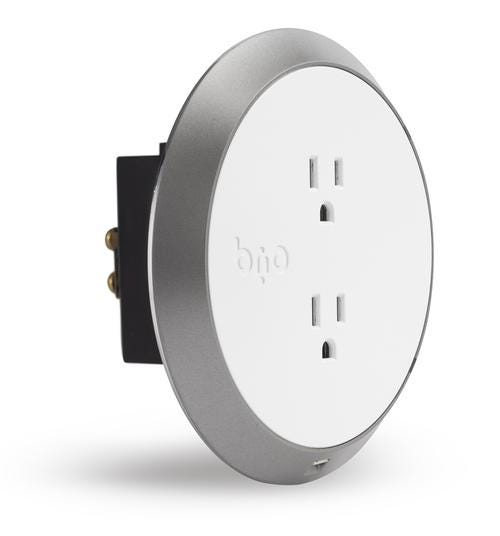Thanks to Sensors and an MCU, an Outlet Keeps Toddlers Safe
August 6, 2015

A tiny finger in a wall outlet is the fear of virtually every toddler’s parents. Now, however, a company has developed an outlet that protects inquisitive children who want to stick their fingers in the wrong places, thanks to built-in sensors.
Known as the Brio Safe Outlet, the new device uses sensors and a microcontroller to act as a line of defense against shock. "The outlet turns a hundred-year-old technology on its head,” Brio spokeswoman Jocelyn Painter told Design News. “You could stick anything from a paper clip to a knife in there and it won’t shock you.”

The Safe Outlet won’t deliver a full electrical load unless it’s appropriate to do so. It accomplishes that by operating from a normally “off” state. When an object is placed in its opening, the outlet uses two infrared sensors and the MCU to examine it. If the sensors don’t “see” the two blades of a conventional electrical plug, the outlet remains in the off state. If, however, the sensors see two blades, the outlet allows passage of a safe, low-level 24 V output. It then employs a shunt resistor current detector to examine the resulting current as it passes.
The key to the device’s ability to make the right decision is its use of a Kinetis microcontroller from Freescale Semiconductor to monitor the low-level current waveform. If the device determines that it’s appropriate to allow full current, it activates a relay that’s built into the device.
MORE FROM DESIGN NEWS: Paralyzed Indy Car Driver Uses Sip, Puff and Yaw to Drive Again
”We sense the current as soon as we apply the 24 V,” explained Goki Hirasawa, systems engineer for Brio. “If the current doesn’t go above a pre-determined level, then the output remains at 24 V. But if it goes above the pre-determined level, then we release the full 120 V.”
All of the components –- microcontroller, sensors, circuit board, and relay –- are housed in a conventional AC outlet box inside the wall. “This is a replacement for the outlet in many homes,” Jesus Villalpando, software engineer for Brio, told Design News. “It fits within the same dimensions as the existing electrical box.”
Brio said the solution is better than the traditional five-cent plastic outlet covers that can be purchased at hardware stores. “Those little covers are really not a good solution,” Painter said. “This is safer because the outlet is always in a normally off state.”

We’re heading to Philly! Design & Manufacturing Philadelphia will take place Oct. 7-8. Get up close with the latest design and manufacturing technologies, meet qualified suppliers for your applications, and expand your network. Learn from experts at educational conferences and specialty events. Register today and join us at Philadelphia’s premier industry showcase!
Senior technical editor Chuck Murray has been writing about technology for 31 years. He joined Design News in 1987, and has covered electronics, automation, fluid power, and autos.
About the Author(s)
You May Also Like

.jpg?width=300&auto=webp&quality=80&disable=upscale)

